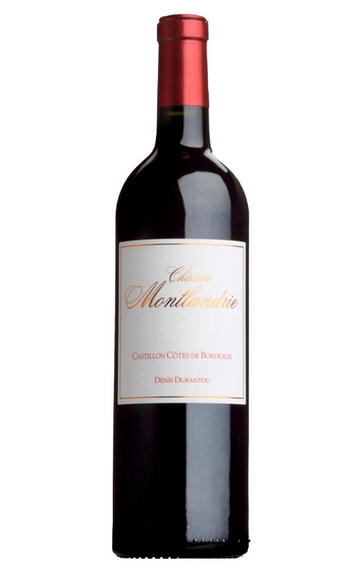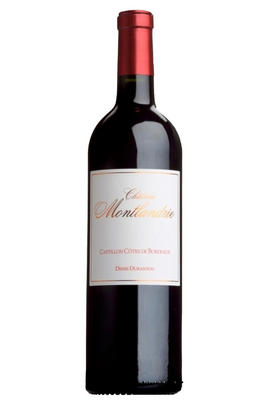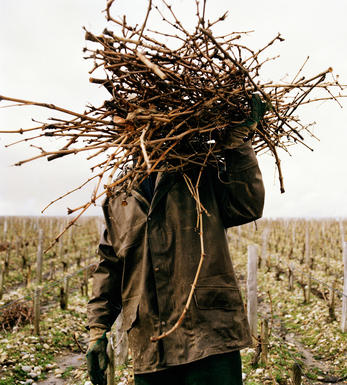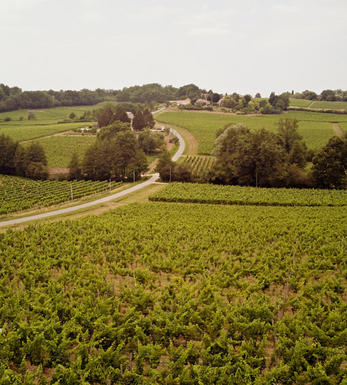
2020 Château Montlandrie, Castillon Côtes de Bordeaux

Critics reviews
The 2020 Montlandrie was picked September 18–25 and matured in 40% new oak. It has an exuberant, ripe bouquet, a mixture of red and blueberry fruit, crushed violets and potpourri aromas surfacing with aeration. The palate is medium-bodied with supple tannins, sweet and sensual, although I find less complexity on the finish compared directly with its siblings, La Chenade and Les Cruzelles. Still, this will give several years of drinking pleasure.
Drink 2025 - 2035
Neil Martin, Vinous.com (April 2021)
Denis Durantou estate up on the limestone plateau of Castillon, now vinified by his daughter Noémie Durantou. Deeply coloured, ruby in colour with fleshy fruit, not giving a whole lot away right now, but this is a fairly discreet vintage in many ways. The dominant impression is of a rough linen and wet stone texture that reflects its limestone soils. Width and depth as it opens in the palate, serious for now but with plenty to give. A yield of 45hl/ha. 3.6pH.
Drink 2023 - 2035
Jane Anson, Decanter.com (May 2021)
The 2020 Montlandrie is a blend of 75% Merlot, 20% Cabernet Franc and 5% Cabernet Sauvignon. The Merlot was picked between the 18th and the 22nd of September, and the Cabernet Franc and Sauvignon were picked from the 23rd to the 25th of September. It has an alcohol of 14.5% and is aging in French oak barrels, 40% new.
Deep garnet-purple colored, it bursts from the glass with vibrant notes of crushed blackberries, fresh, juicy black plums and mulberries, plus hints of bay leaves, cardamom, ground black pepper and black truffles. The medium to full-bodied palate possesses impressive freshness with a solid backbone of soft, rounded tannins and bags of ripe black fruits, finishing long with a peppery kick. 53,000 bottles are expected to be made.
Drink 2025 - 2039
Lisa Perrotti-Brown MW, Wine Advocate (May 2021)
Cask sample. Ripe and full with notes of dark fruits, damsons and spice. Gourmand and generous on the palate but with a freshness that runs all the way through. Tannins chalky and firm but fine-edged providing plenty of length on the finish. Energy and balance as well. Clearly a success this year. Should be GV.
Drink 2025 - 2034
James Lawther MW, JancisRobinson.com (April 2021)
Very salty and tangy with some white pepper, too, as well as lots of blackberries and blueberries. Medium body with delicate yet firm tannins that show intensity. Firm finish.
James Suckling, JamesSuckling.com (April 2021)
About this WINE

Chateau Montlandrie
Located in the Castillon Côtes de Bordeaux appellation, Château Montlandrie is owned by Denis Durantou, a highly respected winemaker known for his meticulous attention to detail and commitment to producing high-quality wines.
The history of Château Montlandrie dates back to the 18th century, and the estate has been in the Durantou family since 1983. Denis Durantou, known for his work at Château l'Eglise-Clinet in Pomerol, acquired Château Montlandrie with a vision to create exceptional wines that showcase the unique terroir of the Castillon region.
The vineyards of Château Montlandrie span approximately 12 hectares (30 acres) and are planted with a blend of grape varieties, including Merlot, Cabernet Franc, and Cabernet Sauvignon. The vineyards benefit from a favourable mesoclimate, with a combination of clay and limestone soils that contribute to the elegance and complexity of the wines.
Denis Durantou's winemaking philosophy at Château Montlandrie focuses on preserving the purity of the fruit and expressing the terroir. The grapes are harvested by hand and undergo meticulous sorting to ensure only the best quality fruit is used. The vinification process combines traditional techniques with modern precision, including gentle extraction methods and careful ageing in French oak barrels.
The wines of Château Montlandrie are known for their elegance, balance, and age-worthiness. They often exhibit ripe fruit flavours, such as blackberries and plums, subtle spice notes, and well-integrated tannins.

Côtes de Castillon
To the east of the St Émilion wine appellation, and on the north bank of the Dordogne, Côtes de Castillon has been the site of considerable interest and investment since the early 2000s. Wine production is significant, yielding over 1.5 million cases per annum and quality is quite variable, ranging from the everyday from the sandy and light gravel soils to imposing, aspirational wines benefiting from considerable investment, and made from the clay and limestone vineyards on higher slopes.
The style of these latter wines is akin to good St Émilion, and the wines use predominantly Merlot and Cabernet Sauvignon. In common with other regions recognised to produce interesting and good-value wines, several well-known St Émilion proprietors have invested in the appellation over the past decade, among them Gérard Perse of Ch. Pavie, Stephan Von Neipperg of Canon-la-Gaffelière, and consultant Stéphane Derénoncourt.

Cabernet Sauvignon Blend
Cabernet Sauvignon lends itself particularly well in blends with Merlot. This is actually the archetypal Bordeaux blend, though in different proportions in the sub-regions and sometimes topped up with Cabernet Franc, Malbec, and Petit Verdot.
In the Médoc and Graves the percentage of Cabernet Sauvignon in the blend can range from 95% (Mouton-Rothschild) to as low as 40%. It is particularly suited to the dry, warm, free- draining, gravel-rich soils and is responsible for the redolent cassis characteristics as well as the depth of colour, tannic structure and pronounced acidity of Médoc wines. However 100% Cabernet Sauvignon wines can be slightly hollow-tasting in the middle palate and Merlot with its generous, fleshy fruit flavours acts as a perfect foil by filling in this cavity.
In St-Emilion and Pomerol, the blends are Merlot dominated as Cabernet Sauvignon can struggle to ripen there - when it is included, it adds structure and body to the wine. Sassicaia is the most famous Bordeaux blend in Italy and has spawned many imitations, whereby the blend is now firmly established in the New World and particularly in California and Australia.


Buying options
Add to wishlist
Description
Merlot 75%, Cabernet Franc 20%, Cabernet Sauvignon 5%
This very highly regarded wine is from the late Denis Durantou’s estate and is now made by his daughter Noémie. The vineyards are on predominantly south-facing limestone-rich soils from the Castillon plateau. There is plenty of ripe, dense and plummy fruit, but the wine is also well-knit with a gourmand tension. The tannins are typical Castillon: assertive and a little edgy, with a firming sense of chalk dust. But they are also part of this wine’s confident personality. This is a high-quality wine from an appellation that is increasingly delivering quality and value.
Drink 2023 - 2035
wine at a glance
Delivery and quality guarantee